Unsupported Operand Type S For Str And Str
Overview of unsupported operand type(s) for ‘str’ and ‘str’:
In Python, the operator ‘+’ is used for concatenating strings. It allows you to combine multiple strings into one. However, this operator cannot be used with other data types like integers, floats, or lists.
Understanding operands and types:
In programming, an operand refers to the data that an operator works on. Python has various operators, such as arithmetic, comparison, and logical operators. Each operator requires specific types of operands to perform the operation successfully.
Common errors when using string operands:
1. Unsupported operand type(s) for -: ‘str’ and ‘int’:
This error occurs when you try to subtract an integer from a string. For example:
“`python
a = “Hello”
b = 5
c = a – b # This will result in an error
“`
2. Python float to string:
When you try to use the ‘+’ operator to concatenate a string and a float, it raises the unsupported operand type error. For instance:
“`python
a = “Hello”
b = 3.14
c = a + b # This will raise an error
“`
3. Name base_dir is not defined:
This error occurs when you try to concatenate a string with an undefined variable. For example:
“`python
a = “Hello”
c = a + base_dir # This will raise an error if base_dir is not defined
“`
Common causes of unsupported operand type(s) for ‘str’ and ‘str’:
1. Incorrect use of operators:
This error occurs when you try to use the wrong operator for concatenating strings with other data types. It is essential to understand the correct usage of operators in Python.
2. Uninitialized or undefined variables:
When you try to concatenate a string with an uninitialized or undefined variable, it results in an unsupported operand type error. Make sure to initialize and define all the variables before using them.
Handling unsupported operand type errors:
To handle unsupported operand type errors, you need to ensure that you are performing operations only between compatible types. Here are some techniques you can use:
1. Type casting:
Type casting allows you to convert one data type to another. By converting the incompatible type to a compatible one, you can perform the operation successfully. For example, to cast an integer to a string, you can use the str() function:
“`python
a = “Hello”
b = 5
c = a + str(b) # Using type casting to convert b to a string
“`
2. Converting string operands to compatible types:
If you are dealing with different data types, consider converting the string operands to compatible types before performing the operation. For example, if you want to concatenate a float with a string, convert the float to a string first:
“`python
a = “Hello”
b = 3.14
c = a + str(b) # Converting the float b to a string
“`
Troubleshooting tips for unsupported operand type errors:
1. Check the error message:
Carefully read the error message to identify the unsupported operand type and the specific line of code where the error occurs. This can help you pinpoint the issue and find a solution more efficiently.
2. Review the documentation:
Refer to the Python documentation or the documentation of any libraries or modules you are using to ensure that you are using the correct operators and types in your code.
Impact of unsupported operand type errors on program execution:
Unsupported operand type errors can prevent your program from executing successfully. They can lead to unexpected behaviors, crashes, or incorrect results. It is crucial to handle these errors appropriately to maintain the integrity and reliability of your code.
Best practices to prevent unsupported operand type errors:
1. Validate data types:
Before performing operations, validate the data types of your variables to ensure they are compatible. Use conditionals or type-checking techniques to handle different scenarios.
2. Input validation:
When accepting user input, implement input validation mechanisms to ensure that the values entered are of the correct type. This can help prevent unsupported operand type errors caused by invalid user input.
3. Good coding practices:
Follow good coding practices such as proper variable initialization, variable naming conventions, and code organization. These practices can help minimize the occurrence of unsupported operand type errors.
FAQs:
Q: How do I convert a string to a float in Python?
A: You can use the float() function to convert a string to a float. For example:
“`python
str_num = “3.14”
float_num = float(str_num)
“`
Q: Why am I getting an error when using an operator with a string and a list?
A: The ‘+’ operator is used for concatenating strings, not for combining a string and a list. To concatenate a string and a list, you need to convert the list to a string first using the str() function and then perform the concatenation.
Q: What should I do if I encounter unsupported operand type(s) for ‘WindowsPath’ and ‘str’?
A: This error may occur when you try to concatenate a WindowsPath object (e.g., obtained from the pathlib module) with a string. To fix this, convert the WindowsPath object to a string using its .__str__() method before concatenation.
Q: How can I handle unsupported operand type(s) for ‘datetime.datetime’ and ‘str’?
A: If you want to concatenate a datetime object with a string, you can use the strftime() method to format the datetime object as a string before concatenation. For example:
“`python
import datetime
now = datetime.datetime.now()
date_string = now.strftime(“%Y-%m-%d %H:%M:%S”)
message = “The current date and time is: ” + date_string
“`
Python Typeerror: Unsupported Operand Type(S) For +: ‘Int’ And ‘Str’
What Does Unsupported Operand Type S For Str And Str Mean?
If you have ever encountered the error message “Unsupported operand type(s) for str and str”, you may have wondered what it means and how to resolve it. This error message is commonly seen in programming languages like Python and is related to incompatible types of operands used in a string operation. In this article, we will delve into the meaning of this error message, why it occurs, and provide some solutions to fix it.
Understanding the Error Message:
When you see the error “Unsupported operand type(s) for str and str”, it indicates that you are trying to perform an operation between two string operands that is not supported. In programming, an operand refers to a variable or value on which an operation is performed. In this case, both operands are strings.
Strings in most programming languages are sequences of characters that are enclosed within quotes, such as “Hello World”. However, certain operations between strings might be incompatible, leading to this error message.
Reasons for the Error:
1. Invalid Operation – The most common reason for encountering this error is attempting an operation that is not supported between two strings. For example, trying to multiply or divide two strings is not a valid operation, as it contradicts the meaning of multiplication or division in the context of strings.
2. Mismatched Types – Another reason for this error is attempting to combine or compare different types of data with strings. For instance, comparing a string with an integer or performing arithmetic with a string and a number will lead to the “unsupported operand type” error.
Solutions to Fix the Error:
1. Check for Mismatched Types – To resolve the error, carefully examine your code and identify any instances where you are trying to perform operations between strings and incompatible data types. Ensure that all operands in the operations are of the same type or can be implicitly converted to the same type.
2. Correct the Invalid Operation – If you are attempting to perform an operation between strings that is not supported, consider reviewing your code logic. Evaluate whether the operation is necessary or if you need to rephrase it in a different way to achieve your desired outcome.
3. Convert Data Types – In some cases, you might need to convert the data types of your operands to make them compatible. For example, you can use str() to convert an integer to a string or int() to convert a string to an integer. By ensuring that the operands are of compatible types, you can avoid the “unsupported operand type(s)” error.
Frequently Asked Questions (FAQs):
Q: Which programming languages commonly display the “Unsupported operand type(s) for str and str” error message?
A: This error can be encountered in various programming languages that support string operations, such as Python, JavaScript, and others.
Q: What are examples of invalid operations between strings?
A: Invalid operations can include multiplication, division, and subtraction between two strings.
Q: Can this error occur when comparing strings in an if statement?
A: Yes, if the operands being compared have incompatible types (e.g., string and integer), this error can occur.
Q: How can I avoid encountering this error in my code?
A: To avoid this error, ensure that all operations involving strings are valid and that the operands have compatible types. Carefully review your code and check for any inconsistencies.
Q: Are there any other error messages related to unsupported operand types?
A: Yes, similar error messages might appear when working with other data types, such as “unsupported operand type(s) for int and str” or “unsupported operand type(s) for float and str”.
In conclusion, the “Unsupported operand type(s) for str and str” error message occurs when attempting invalid operations between string operands or when there is a mismatch in operand types. By examining your code, checking for incompatible types, and using appropriate data type conversions, you can resolve this error and ensure your program functions as intended. Remember to always review your code thoroughly to catch any potential errors and inconsistencies.
How To Solve Unsupported Operand Type S For +: Int And Str In Python?
Python is a versatile and powerful programming language, frequently used for web development, data analysis, artificial intelligence, and more. However, it’s not uncommon to encounter errors during coding, and one such error is the “Unsupported Operand Type(s) for +: int and str.” In this article, we will dive deep into this error and provide solutions to tackle it effectively.
Understanding the Error:
Before we jump into solving the issue, it is crucial to understand the error message. This error occurs when you try to concatenate a string and an integer using the “+” operator. Python generally does not allow the addition of different data types directly, resulting in the unsupported operand type(s) error.
Common Scenarios that Cause the Error:
Now that we are familiar with the error, let’s explore some common scenarios in which this error arises:
1. Trying to Concatenate an Integer with a String:
An example of this scenario would be:
“`python
x = “Python”
y = 3
result = x + y
“`
2. Attempting to Add an Integer and a String in a Loop or List:
Consider this code snippet:
“`python
my_list = [1, 2, 3, 4, 5]
result = “”
for num in my_list:
result += num + ” ”
“`
Solutions to the “Unsupported Operand Type(s) for +: int and str” Error:
Now that we understand the error and its common scenarios, let’s explore some solutions to resolve it.
1. Convert Integer to String:
Convert the integer to a string using the “str()” function. You can then concatenate the string as required. Here’s an example:
“`python
x = “Python”
y = 3
result = x + str(y)
“`
2. Convert String to Integer:
If your intention is to perform numerical operations, you can convert the string to an integer using the “int()” function. Here’s an example:
“`python
x = “3”
y = 5
result = int(x) + y
“`
3. Utilize String Formatting:
String formatting allows you to combine different data types without explicitly converting them. Consider the following example:
“`python
x = “Python”
y = 3
result = “{} {}”.format(x, y)
“`
Frequently Asked Questions (FAQs):
Q1. Can I concatenate a string and an integer using the “+” operator in Python?
A1. No, Python does not allow the direct concatenation of a string and an integer using the “+” operator. However, there are multiple ways to achieve the desired result, such as converting the integer to a string or using string formatting.
Q2. How can I concatenate multiple integers and strings?
A2. To concatenate multiple integers and strings, you can convert the integers to strings and use string concatenation or string formatting methods. Alternatively, you can convert the strings to integers if you want to perform numerical operations.
Q3. What are some alternatives to the “+” operator for combining strings and integers in Python?
A3. Apart from the “+” operator, you can use methods like string formatting (using “{}”.format()) or f-strings (using “f” as a prefix) to combine strings and integers efficiently.
Q4. Are there any performance differences between different solutions?
A4. Yes, there might be performance differences depending on your specific use case. Generally, converting the integer to a string using “str()” or utilizing string formatting have similar performance characteristics. However, if you are performing extensive numerical operations, converting the string to an integer might provide better performance.
Q5. Can this error occur with other data types as well?
A5. Yes, this error can occur when trying to concatenate different incompatible data types, such as lists and strings or dictionaries and integers. The same solutions mentioned above can be applied to resolve such errors.
In conclusion, encountering the “Unsupported Operand Type(s) for +: int and str” error can be frustrating, but with a solid understanding of the error message and a range of solutions, it can be resolved efficiently. By following the guidelines provided in this article, you will be able to overcome this error and ensure smooth execution of your Python code.
Keywords searched by users: unsupported operand type s for str and str Unsupported operand type(s) for -: ‘str’ and ‘int, Python float to string, Name base_dir db sqlite3 typeerror unsupported operand type s for str and str, Unsupported operand types, Unsupported operand type(s) for list’ and ‘int, Unsupported operand type s for WindowsPath and str, Convert string to float Python, Unsupported operand type(s) for datetime datetime and str
Categories: Top 31 Unsupported Operand Type S For Str And Str
See more here: nhanvietluanvan.com
Unsupported Operand Type(S) For -: ‘Str’ And ‘Int
Introduction:
In the world of programming, encountering errors is inevitable. One common error that developers often come across is “Unsupported operand type(s) for -: ‘str’ and ‘int’.” This error message usually occurs when attempting to perform a mathematical operation, such as subtraction, between a string (str) and an integer (int). In this article, we will dive deep into the reasons behind this error, explore common scenarios where it may occur, and provide solutions for resolving it.
Understanding the Error:
To comprehend this error, it is crucial to understand the fundamental difference between strings and integers. In programming, a string is a sequence of characters enclosed within quotation marks. On the other hand, an integer is a whole number without any decimal points. When you try to subtract an integer from a string or vice versa, Python raises an exception, indicating that the operation is not supported.
Common Scenarios:
1. Concatenating strings with integers:
When attempting to concatenate or add a string and an integer using the ‘+’ operator, Python automatically converts the integer into a string. However, the ‘-‘ operator does not possess such implicit conversion. For example:
“`python
string_variable = “Hello”
integer_variable = 7
result = string_variable – integer_variable # Error occurs!
“`
In this case, Python is unable to convert the string into an integer for subtraction, resulting in the error message.
2. Combining user input with arithmetic operations:
It is common for developers to interact with users by accepting input through the input() function. However, these inputs are always strings, regardless of whether the user provides numbers. Therefore, trying to perform arithmetic operations directly on user inputs often leads to the aforementioned error. A typical example could be:
“`python
user_input = input(“Enter a number: “)
result = user_input – 5 # Error occurs!
“`
Here, the user_input is a string, and attempting to subtract an integer from it triggers the unsupported operand type error.
3. Accessing dictionary elements:
Dictionaries in Python store key-value pairs, where the keys are unique. When attempting to access dictionary values using incorrect key types, a similar error can occur. Consider the following dictionary:
“`python
details = {‘name’: ‘John Doe’, ‘age’: 25}
result = details[‘name’] – 5 # Error occurs!
“`
The ‘name’ key corresponds to a string value, and subtracting an integer from it will lead to the unsupported operand type error.
Resolving the Error:
Now that we have identified various scenarios where this error commonly occurs, let’s explore some solutions to resolve it.
1. Data type conversions:
To perform arithmetic operations, ensure that the operands share the same data type. If you have a string that you want to use for calculations, convert it into an integer using the int() function. Conversely, when you wish to concatenate an integer with a string, convert the integer into a string using the str() function. For example:
“`python
string_variable = “10”
integer_variable = 7
converted_string = int(string_variable)
result = converted_string – integer_variable
“`
2. Parse user inputs correctly:
When accepting user inputs, it is essential to convert them into the appropriate data type. If you expect numerical input from the user, convert the input into an integer or a float using the int() or float() functions, respectively. Here’s an example:
“`python
user_input = input(“Enter a number: “)
converted_input = int(user_input)
result = converted_input – 5
“`
3. Validating dictionary access:
Before attempting arithmetic operations on dictionary values, ensure that the accessed key exists and provides the required data type. Here’s an example of how to validate access to a dictionary value:
“`python
details = {‘name’: ‘John Doe’, ‘age’: 25}
if isinstance(details[‘name’], str): # check if it’s a string
result = details[‘age’] – 5
“`
Frequently Asked Questions (FAQs):
Q1. Can I perform subtraction between any two objects in Python?
Answer: No, not all objects are compatible with subtracting each other. For instance, subtracting two lists or subtracting a list from a string will result in unsupported operand type errors.
Q2. What other arithmetic operations can raise similar errors?
Answer: Similar errors can occur with other arithmetic operations such as multiplication (*) and division (/). It is important to understand the data types involved and their compatibility before performing any mathematical operations.
Q3. How can I handle cases where the input provided by the user may not always be an integer?
Answer: To handle scenarios where the user input can have various types, you can use exception handling techniques like try-except blocks to catch errors and handle them accordingly. Proper validation and error messages can be used to guide the user if an invalid input is provided.
Conclusion:
The “Unsupported operand type(s) for -: ‘str’ and ‘int'” error is a common issue that developers face when attempting to perform mathematical operations between strings and integers. Understanding the differences between strings and integers and implementing appropriate data type conversions are key to preventing this error. By following the solutions provided in this article, you can efficiently overcome this error and improve the reliability and functionality of your code.
Python Float To String
In Python, programming often involves the conversion of data types for various purposes. One common conversion is the transformation of a float (a floating-point number) to a string (a sequence of characters). This article aims to provide a comprehensive guide on how to convert a Python float to a string, along with detailed explanations of the underlying concepts and practices.
Understanding Floats and Strings in Python
Before diving into the conversion process, it is crucial to understand the basic properties and characteristics of floats and strings in Python.
A float, also known as a floating-point number, is a data type used to represent real numbers. It allows for fractional values and can be positive or negative. Floats are generally displayed with a decimal point, such as 3.14 or -0.27, providing high precision calculations for scientific or mathematical operations.
On the other hand, a string is a sequence of characters enclosed in quotes, either single (”) or double (“”). It can represent any text or combination of characters, including numbers, symbols, and alphabets. Strings are used for storing and manipulating textual data.
Converting Float to String using str() Function
The most straightforward method to convert a float to a string in Python is by using the built-in str() function. This function takes any data type as an argument and returns its string representation. When applied to a float, the str() function converts it into a string while preserving its format, including the decimal point and any trailing zeros.
Consider the following example:
“`python
my_float = 3.14
my_string = str(my_float)
print(my_string)
“`
Output:
“`python
‘3.14’
“`
As demonstrated, the str() function successfully converted the float value 3.14 into a string representation ‘3.14’. It is important to note that the resulting string is surrounded by single quotes (”). These quotes signify that the value is a string rather than a numeric value.
However, despite this simplicity, the str() function doesn’t provide much flexibility when it comes to formatting the converted string. For more advanced formatting options, Python offers the format() method.
Advanced Formatting with format() Method
In situations where you require more control over the formatting of the string representation of a float, Python’s format() method comes to the rescue. This method allows you to specify the number of decimal places, minimum width, and various other formatting options.
Let’s explore some examples to showcase the versatility of the format() method:
“`python
number = 123.456
formatted_string = “{:.2f}”.format(number)
print(formatted_string)
“`
Output:
“`python
‘123.46’
“`
In this case, the format() method formats the float number with two decimal places, resulting in the string ‘123.46’.
Similarly, the format() method allows for additional formatting options, such as minimum width and alignment:
“`python
price = 9.99
formatted_price = “{:8.2f}”.format(price)
print(formatted_price)
“`
Output:
“`python
‘ 9.99’
“`
Here, the formatted_price string is given a minimum width of 8 characters, resulting in the string ‘ 9.99’ with leading spaces to achieve the width.
Frequently Asked Questions
Q1. Can I convert a float to a string without any decimal places?
Yes, it is possible to convert a float to a string without showing any decimal places. You can achieve this by using the appropriate formatting option. For example:
“`python
my_float = 3.14
my_string = “{:.0f}”.format(my_float)
print(my_string)
“`
Output:
“`python
‘3’
“`
Here, by specifying {:.0f} in the format() method, the resulting string only displays the whole number part of the float.
Q2. How can I control the number of decimal places while converting a float to a string?
To control the number of decimal places, you can modify the formatting option. The {:.nf} format, where n is the desired number of decimal places, can be used. For example:
“`python
my_float = 3.14159
my_string = “{:.3f}”.format(my_float)
print(my_string)
“`
Output:
“`python
‘3.142’
“`
In this case, the {:.3f} format ensures that the resulting string will display the float value with three decimal places.
Q3. Are there any other methods to convert a float to a string in Python?
Python provides several other methods to convert a float to a string. One alternative to the str() function is the repr() function, which returns a string representation of an object’s value but in a more precise form. Additionally, f-strings (formatted string literals) introduced in Python 3.6 allow embedding expressions directly into string literals, including the conversion of floats to strings.
In conclusion, converting a Python float to a string is an essential skill for developers working with numerical data or user inputs. While the str() function provides a quick and easy way to perform the conversion, the format() method offers more advanced formatting options. By understanding these methods and their applications, you can effectively handle float-to-string conversions within your Python programs.
Name Base_Dir Db Sqlite3 Typeerror Unsupported Operand Type S For Str And Str
When working with databases, especially in Python, sometimes an unexpected error message might pop up, leaving us puzzled and unsure about how to proceed. One such error is the “TypeError: unsupported operand type(s) for +: ‘str’ and ‘str'” in a SQLite3 database. This error occurs when we try to concatenate two strings, but one or both of them are not properly defined.
In order to understand this error and its causes, let’s dive deeper into the topic.
Understanding the Error
The TypeError “unsupported operand type(s) for +: ‘str’ and ‘str'” occurs in Python when we try to concatenate two or more strings using the ‘+’ operator, but one of the operands is not a valid string.
In the context of SQLite3, this error is commonly encountered when trying to establish a connection to a database using the `sqlite3` module. To connect to a SQLite database, we need to provide the path to the database file. If this path is not correctly defined, the error is thrown.
Common Causes of the Error:
1. Undefined Database Path (base_dir): One of the main causes of this error is that the `base_dir`, which represents the base directory or path where the database file is stored, is not properly defined. It is essential to double-check that the correct path to the database file is provided.
2. Incorrect Path Format: Another common cause is when the path format is incorrect. Paths in Python are usually represented using a forward slash (/) or a double backslash (\\) to escape the backslash character. To avoid unexpected errors, it is important to ensure that the path is correctly formatted.
3. Inadequate File Permissions: If the database file and its directories do not have sufficient permissions, the Python script might not be able to access the file. Checking the file permissions and making sure they allow the script to access the database can resolve this issue.
How to Fix the Error:
1. Define the Correct Path: The primary step is to make sure that the `base_dir` variable, representing the path to the database, is correctly defined. Check the path and ensure that it points to the correct directory.
2. Verify the Format: Ensure that the path is correctly formatted. For example, if the path contains backslashes, make sure to escape them properly by using double backslashes or replacing them with forward slashes. This is particularly crucial when working on different operating systems.
3. Check File Permissions: If the error persists, double-check the file permissions. Sometimes, the database file or its containing directories might not have appropriate permissions for the script to access. Adjusting the permissions to grant the necessary access rights can help resolve this issue.
FAQs:
Q1. Why am I receiving the “unsupported operand type(s) for +: ‘str’ and ‘str'” error?
This error occurs when you are trying to concatenate two strings (+ operator) in Python, but one or both of them are not properly defined. In the context of SQLite3, this commonly happens when the path to the database file (`base_dir`) is not correctly established.
Q2. How do I define the correct path in the ‘base_dir’ variable?
The ‘base_dir’ variable should contain the path to the directory where the SQLite database file is located. For example:
base_dir = ‘/path/to/database/directory/’
Ensure that the path is correctly formatted and points to the correct directory where the database file is stored.
Q3. Why do I need to pay attention to file permissions?
File permissions determine who can access a file and their level of access. If the Python script does not have sufficient permissions to access the database file or its containing directories, it will result in the “unsupported operand type(s) for +: ‘str’ and ‘str'” error. Double-check the file permissions and adjust them if necessary.
Q4. Can I use relative paths instead of absolute paths?
Yes, you can use relative paths as long as they correctly reference the location of the database file. Relative paths are resolved based on the current working directory of the Python script. However, it is crucial to ensure that the relative path is accurate and remains valid, especially if the script is executed from different locations.
Q5. How can I troubleshoot the error if none of the suggested fixes work?
If none of the suggested fixes resolve the error, consider examining the surrounding code for any potential syntax or logical errors. Verify that the SQLite3 module is correctly imported, and any variables used in the connection string are properly defined. Additionally, consult the official SQLite3 and Python documentation or reach out to the developer community for further assistance.
In conclusion, the “TypeError: unsupported operand type(s) for +: ‘str’ and ‘str'” error in a SQLite3 database occurs when the base directory (`base_dir`) or path to the database file is not correctly defined. This error can be resolved by ensuring that the path is accurately specified, properly formatted, and that the file permissions grant adequate access to the script. By following the suggested fixes and considering the FAQs, you should now be equipped to troubleshoot and overcome this error when working with SQLite3 databases in Python.
Images related to the topic unsupported operand type s for str and str

Found 20 images related to unsupported operand type s for str and str theme





![Solved [27]: train_labels = train_dataset.pop('cnt') | Chegg.com Solved [27]: Train_Labels = Train_Dataset.Pop('Cnt') | Chegg.Com](https://media.cheggcdn.com/media/cbf/cbfa97d4-6739-46ea-9aac-670ec80d8a7f/phpXrJrKb.png)

![Typeerror unsupported operand type s for str and float [SOLVED] Typeerror Unsupported Operand Type S For Str And Float [Solved]](https://itsourcecode.com/wp-content/uploads/2023/04/Typeerror-unsupported-operand-type-s-for-str-and-float.png)
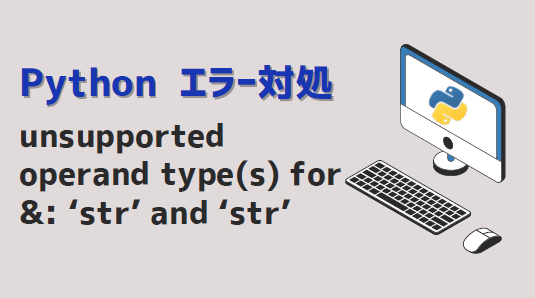

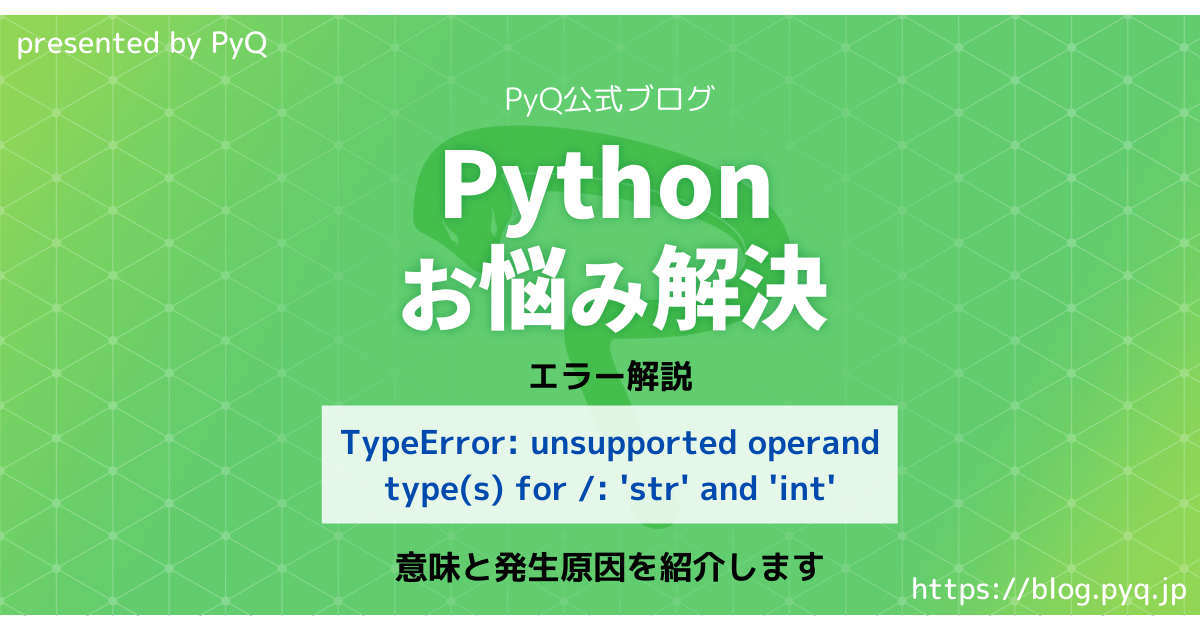













![Solved [27]: train_labels = train_dataset.pop('cnt') | Chegg.com Solved [27]: Train_Labels = Train_Dataset.Pop('Cnt') | Chegg.Com](https://media.cheggcdn.com/media/a4a/a4a1b9db-baab-4919-8f0d-332e942b5cf8/phpnUXBVz.png)


![Typeerror unsupported operand type s for str and float [SOLVED] Typeerror Unsupported Operand Type S For Str And Float [Solved]](https://streaming.humix.com/poster/gaTdZzcYlzzpGtuj/882bd3e3b97969b11e05eb982db81915975addb2946dd334c85f979298a46566_dvJhXP.jpg)







![Dúvida] unsupported operand type(s) for +: 'int' and 'str' | Python: entendendo a Orientação a Objetos | Alura - Cursos online de tecnologia Dúvida] Unsupported Operand Type(S) For +: 'Int' And 'Str' | Python: Entendendo A Orientação A Objetos | Alura - Cursos Online De Tecnologia](https://cdn1.gnarususercontent.com.br/1/1381680/88ea86e0-a477-4b8d-ad7e-f0541e441c9a.png)

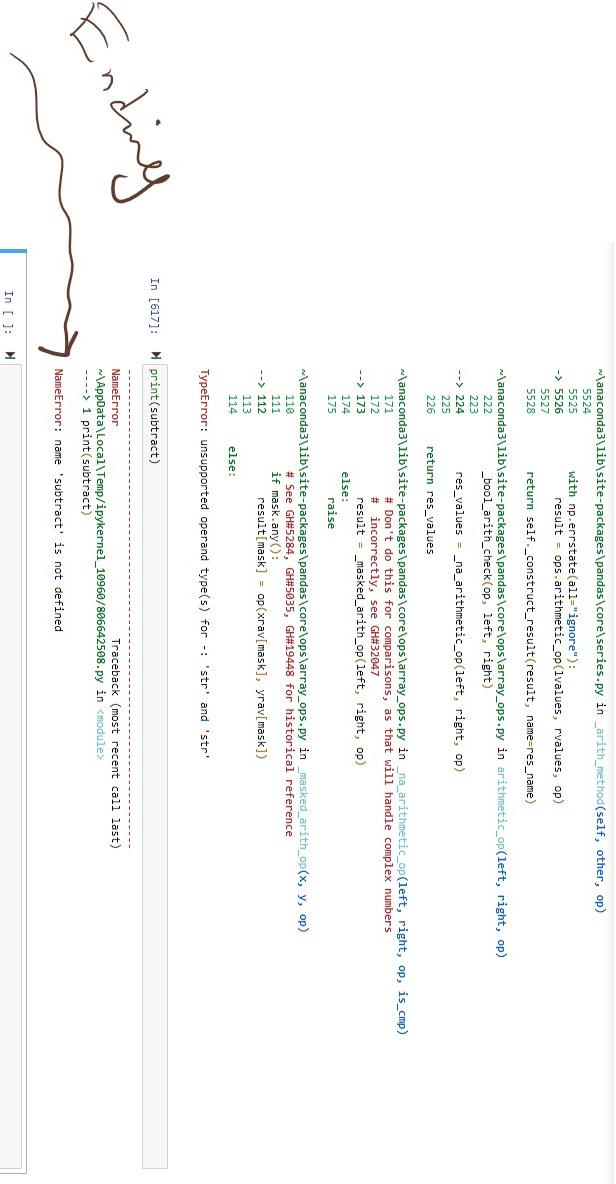




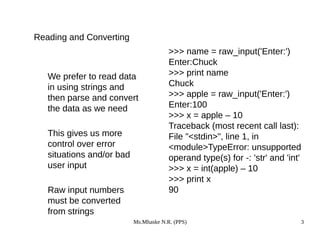


Article link: unsupported operand type s for str and str.
Learn more about the topic unsupported operand type s for str and str.
- TypeError: unsupported operand type(s) for /: ‘str’ and ‘str’
- TypeError: unsupported operand type(s) for -: ‘str’ and ‘int’
- TypeError: unsupported operand type(s) for +: int and str
- TypeError unsupported operand type(s) for + ‘int’ and ‘str’ – STechies
- How to fix TypeError: unsupported operand type(s) for /: ‘str’ and ‘int’
- How to fix TypeError: unsupported operand type(s) for -: ‘str …
- TypeError: unsupported operand type(s) for -: ‘str’ and ‘str’
- TypeError: unsupported operand type(s) for +: int and str
- Typeerror: Unsupported Operand Type(S) For Str And Str
- TypeError unsupported operand type s for – str and str – Edureka
- unsupported operand type(s) for +: ‘bool’ and ‘str’ in Odoov10
- Python – unsupported operand type(s) for +:’int’ and ‘str’
See more: https://nhanvietluanvan.com/luat-hoc